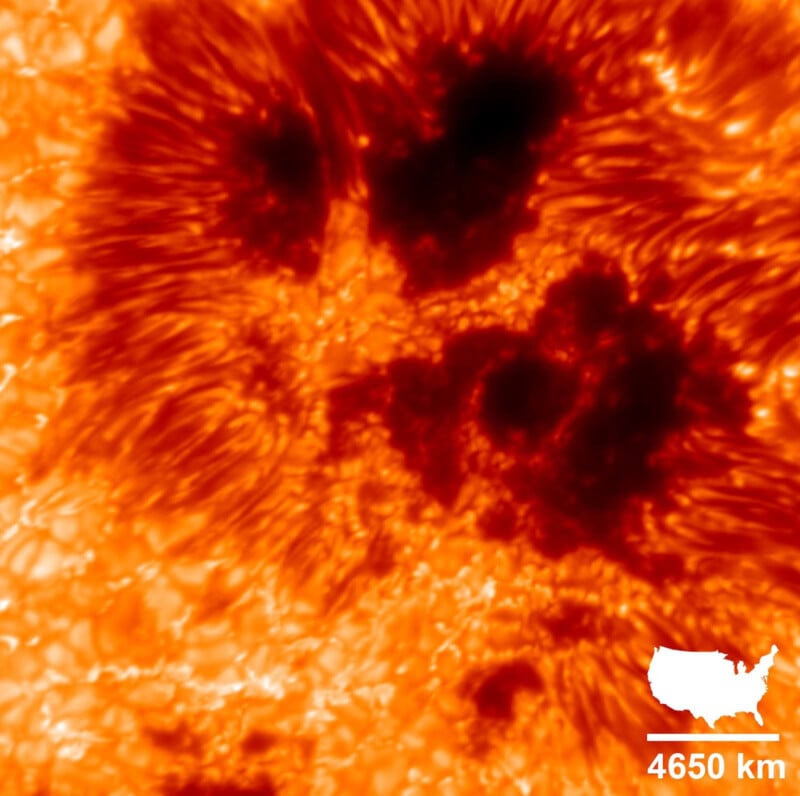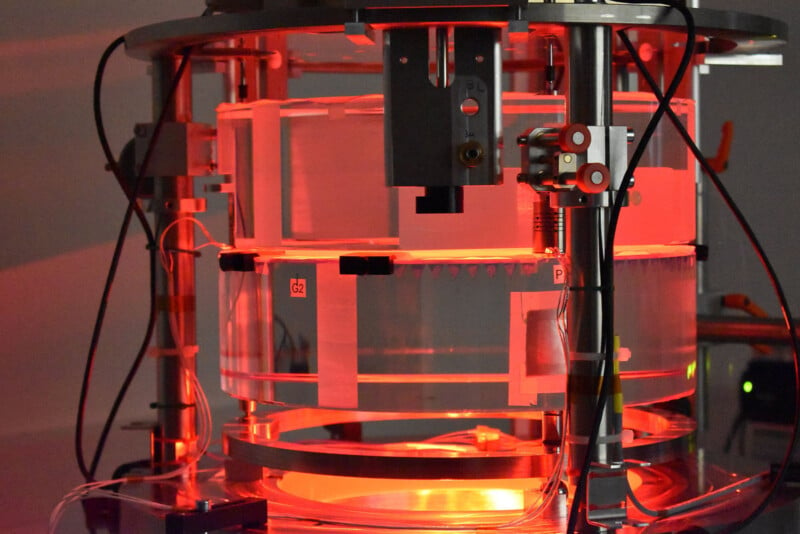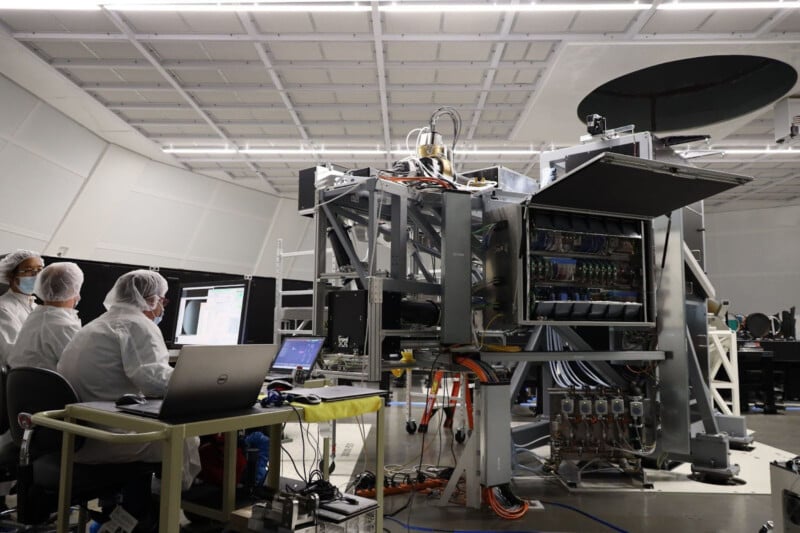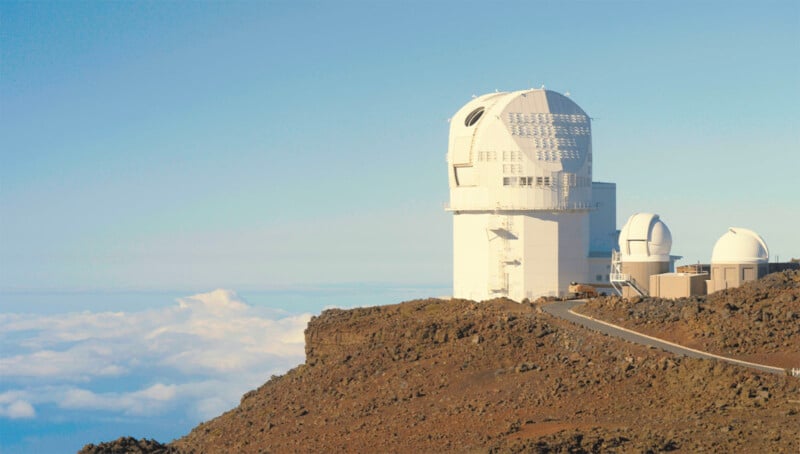World’s Largest Solar Telescope’s First Photos Show Sunspots Bigger Than US

The Daniel K. Inouye Solar Telescope, the world’s most powerful solar telescope, captured its first images last week using its new Visible Tunable Filter (VTF) instrument. The groundbreaking photo shows a cluster of sunspots, each roughly the same size or larger than the contiguous United States.
The United States National Science Foundation’s (NSF) Daniel K. Inouye Solar Telescope is operated by the NSF National Solar Observatory (NSO) near the top of Maui’s Haleakalā volcano and achieved first light on April 24 using the VTF, the telescope’s most advanced instrument.

Built by the Institut für Sonnephysik (KIS) in Germany, the VTF is the world’s largest imaging spectro-polarimeter. The camera captures two-dimensional “snapshots” of the Sun at specific wavelengths, the NSF NSO explains in a press release.
“Different wavelengths of light appear to our eyes as different colors — and light increases in wavelength as it moves from violet to red in the optical range of the electromagnetic spectrum,” the NSF NSO writes.
“Unlike traditional spectrographs that spread light into a full spectrum like a rainbow, the VTF uses an etalon — a pair of precisely spaced glass plates separated by tens of microns — that allows it to tune through colors.”

By precisely adjusting the spacing between the glass plates at the nanometer scale, scientists can use the VTF to sequentially scan across different wavelengths, much like taking a series of images using various color filters. The VTF captures several hundred photos in just a few seconds using three synchronized cameras working across different wavelengths. By combining these images, scientists construct a three-dimensional view of the Sun’s structure and properties.
“Seeing those first spectral scans was a surreal moment. This is something no other instrument in the telescope can achieve in the same way,” says Dr. Stacey Sueoka, Senior Optical Engineer at NSO. “It marked the culmination of months of optical alignment, testing, and cross-continental teamwork. Even with just one etalon in place, we’re already seeing the instrument’s potential. This is only the beginning, and I’m excited to see what’s possible as we complete the system, integrate the second etalon, and move toward science verification and commissioning.”

The VTF will be primarily used to “spectroscopically isolate narrow-band images of the Sun at the highest possible spectral, spatial, and temporal resolution.” During a single observation, the VTF can record around 12 million spectra, which scientists can use to determine properties of the solar atmosphere at different altitudes, including temperature, pressure, velocity, and magnetic field strength. Thanks to the remarkable resolution of the Daniel K. Inouye Solar Telescope, scientists can track solar phenomena changes at spatial scales of 20 to 40,000 kilometers (12 to 25,000 miles).
“After all these years of work, VTF is a great success for me,” remarks Dr. Thomas Kentischer, KIS Co-Principal Investigator and key architect behind the instrument’s optical design. “I hope this instrument will become a powerful tool for scientists to answer outstanding questions on solar physics.”
“The significance of the technological achievement is such that one could easily argue the VTF is the Inouye Solar Telescope’s heart, and it is finally beating at its forever place,” adds Dr. Matthias Schubert, KIS VTF Project Scientist.
Solar activity significantly impacts life on Earth. Solar storms can disrupt critical communication infrastructure across the globe, explains Carrie Black, NSF program director for the NSF National Solar Observatory.

“High-resolution observations of the sun are necessary to improve predictions of such damaging storms,” Black says. “The NSF Inouye Solar Telescope puts the U.S. at the forefront of worldwide efforts to produce high-resolution solar observations and the Visible Tunable Filter will complete its initial arsenal of scientific instruments.”
Space weather, driven by the Sun, is significant and, broadly speaking, relatively misunderstood due to a lack of rich data. The Inouye Solar Telescope is poised to change that and provide the detailed measurements required to make accurate space weather predictions.
“The pioneering image spectro-polarimeter VTF is an example of the necessary technological leaps needed to increase our ability to produce reliable space weather predictions,” the NSO concludes.
Image credits: National Solar Observatory (NSO), AURA, NSF
Source link


